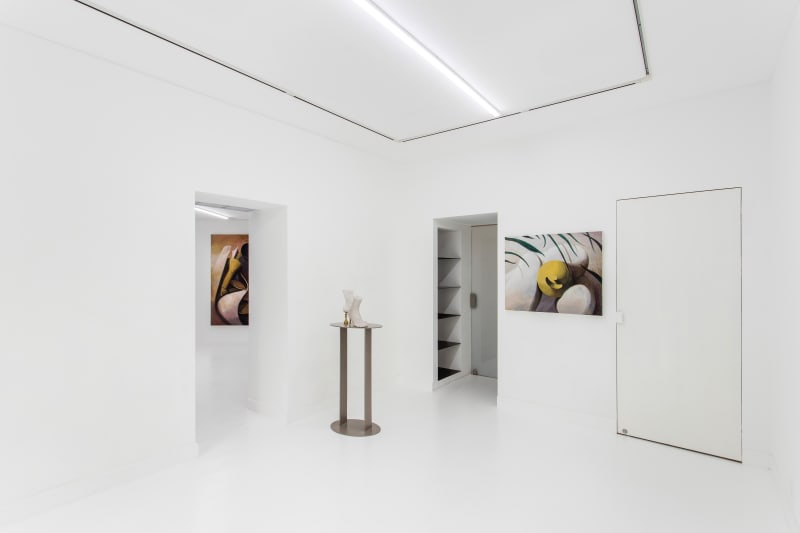“From the dark words just spoken by Valentinov in such abundance, he understood one thing: there was no movie, the movie was just a pretext...a trap, a trap...he would be inveigled into playing chess and then the next move was clear. But this move would not be made.”
-Vladimir Nabakov, The Defense ①
With additional lighting, the space at Capsule Shanghai is whiter than ever. The dark-colored paintings of Cai Zebin on the wall appear almost as rectangular holes. The holes form structures that draw people in to snoop. As people come closer to the paintings, the central images gradually develop, and only then do the subjects of the paintings begin, little by little, to stick their heads out of the holes. They are various chess pieces, like a “bilboqute.”
The attempt of Cai Zebin to portray chess pieces is not without precedent. The name of the exhibition “Defense” comes from a novel of the same name written by the well-known American writer Vladimir Nabokov. It tells the story of a chess genius, Luzhin, who indulges in chess for too long and progressively becomes psychotic. This tragedy enjoys some sort of special grandeur with its audience. Take a look at the entire exhibition: apart from the chess pieces, which have been personified, there are no clear images of chess players. The only human traces are fragments—a palm, some fingers, a heel. However, what is clearly implied by “Invitation to a Beheading” is that the chess pieces are cut by some external force, and that human power is the only possible source of that force.
Chess pieces have no life; they exist as objects. To be precise, chess pieces carry the power of their players and are manipulated by people. In the group “The Third Countenance,” judging from the half-smile-like expressions of the pieces viewed from above, it is hard to know whether the pieces actually feel the pain of the players. What is certain is that when the player finds himself suddenly in the role of a chess piece (as in the novel, when Luzhin’s ‘chess father’ Valentinov tries to trick him into playing chess for profit), he will indeed suffer unimaginable misery. The short-lived genius guarded himself not only against the “check” placed by his opponent, but also from being attacked by secularity. For the main character Luzhin, playing chess becomes an exit, an escape. He has to design a defensive line to combat the troubles of real life.
Being a chess player, the artist chose not to escape. In his new works “Choose Neither Completeness nor Amulet” and “One Trap, One Wish,” the curling shapes of the floral icons overlap with the chess pieces, and both the title and the pictures interpret from multiple angles the state of mind of the artist in the midst of creation and some thoughts and responses relating to his mindset. It is worth mentioning that select information is intentionally revealed through the adaptation of the exhibition space, such as the compartment that allows visitors to peer into the work “Fulcrum” from multiple angles, and the old-fashioned glass window that echoes the sculpture “Vision” at a distance. At this time, curator Yang Zi has seemingly taken on the role of the chess father Valentinov, setting the bait together with the artist, and cooperatively tempting the audience to fall into their carefully designed traps.
Notes:
①The Defense by Vladimir Nabokov, Shanghai Translation Publishing House, 1st ed. February 2009, p. 207.
Translated by ARTranslate



